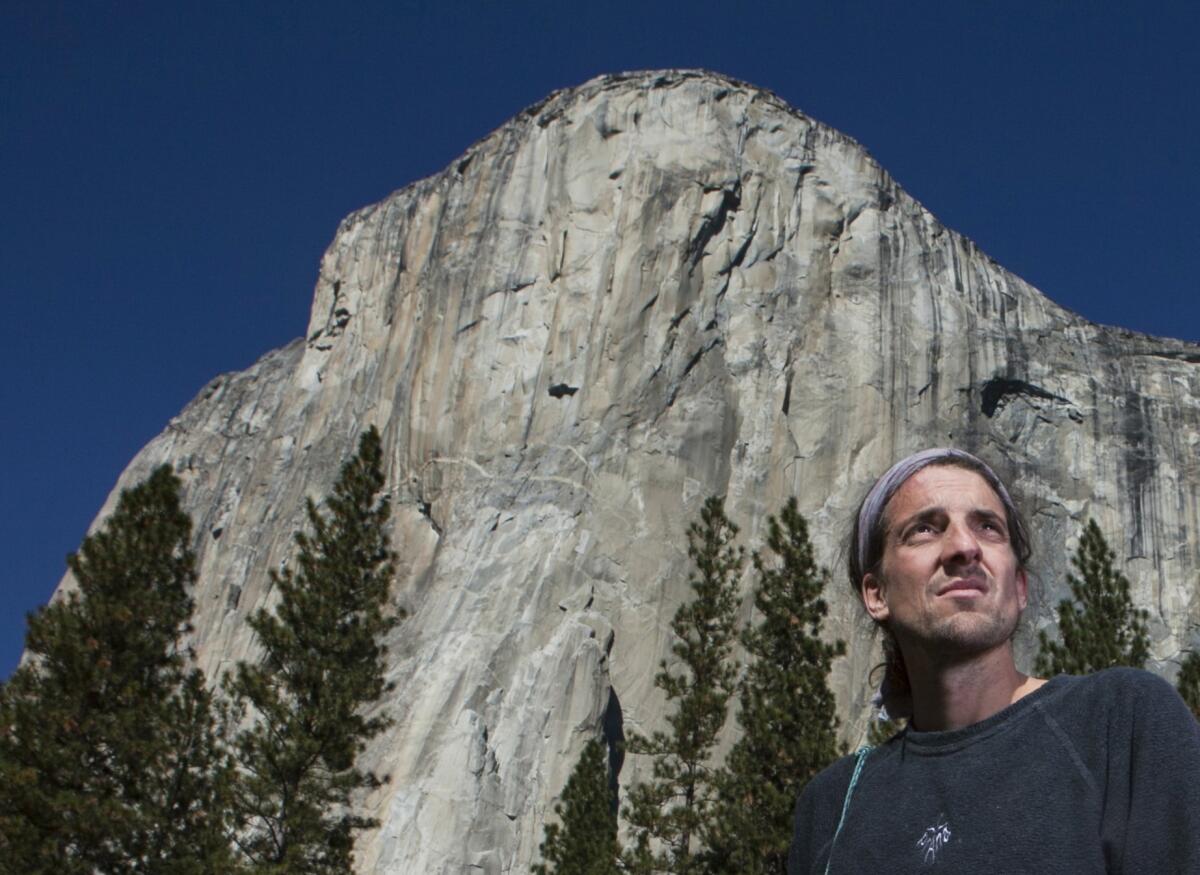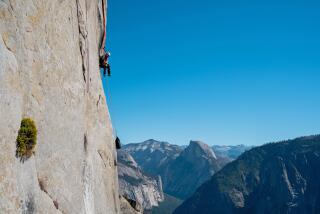Why do extreme athletes like Dean Potter risk their lives?

On May 17, rock climber Dean Potter died while BASE-jumping at
It’s hard for many people to comprehend the risks athletes take for the sake of extreme sports. BASE jumping, for instance, is inherently dangerous — skydiving from a fixed object instead of an aircraft, with little time to react or correct course should a problem arise.
So why would daredevils like rock climber Dean Potter, who died Sunday while BASE-jumping from Yosemite’s Taft Point overlook, make what seem like crazy leaps, time and time again?
The motivation probably boils down to biology and context, psychologists said Monday, and, at least in the case of elite athletes like Potter, it doesn’t have much at all to do with a foolish or willfully self-destructive disregard for safety.
“They don’t have a death wish; they have a life wish,” said Temple University psychologist Frank Farley. “They don’t want to die and they don’t expect to die.”
Farley, a former president of the American Psychological Assn., has studied extreme athletes over the course of decades, accompanying hot air balloon operators during races and journeying to Katmandu, Nepal, to interview climbers returning safely after summiting Mt. Everest.
Time and time again, he found, athletes said they took on grueling, terrifying feats for the excitement of achieving the exceptional. Fear was part of the equation.
“People will tell you, when you’re at the edge of danger, that’s when you really feel life,” Farley said. “This is what being alive is for them. They don’t want to sit at a desk all day.”
Many psychologists think that people who are attracted to extreme sports like BASE jumping are those with “novelty-seeking” personalities who “need new, more intense experiences to experience satisfaction or arousal,” said Emanuel Maidenberg, director of the UCLA Cognitive Behavior Therapy Clinic.
But risk-taking behavior is normal in humans — inscribed in our genes and brain chemistry, said Tamika Gilreath, an assistant professor of social work at USC who studies risky behavior in adolescents.
“If human beings weren’t wired to take risks, we wouldn’t be here,” she said. “Someone had to leave the village to search for water … to mate with other groups.”
With risk essentially eliminated from modern society, people now have to seek it out. Some of the teens Gilreath studies get the dopamine fix their brains crave from drugs or risky sexual behavior. Extreme athletes may get a similar rush from leaping off cliffs or running ultra-marathons, she said.
“There’s a psychological and physiological reward to meeting your goal,” she said. “I think [Potter] was motivated, and every time he achieved a bigger feat, there was a bigger reward and a bigger release.”
Potter, 43, was wearing a winged suit when he jumped from the Yosemite overlook Sunday evening, seeking to repeat a feat he had performed successfully many times. Another climber, 29-year-old Graham Hunt, also perished during the jump.
Farley said research suggested that brain chemistry could be involved in risk-seeking behavior, but that it was probably not the foremost factor. He said that extreme athletes he interviewed shared a collection of traits: tending to be optimistic, energetic, innovative and highly self-confident, with conviction that they can control their fate.
“They’ll say, ‘I’m not taking risks, I’m an expert,’” he said.
Eric Brymer, a professor of exercise and sports science at Manchester Metropolitan University in England, has also studied the experiences and motivations of extreme athletes. He believes focus, expertise and drive — rather than “cheap thrill seeking” — underlie the choices extreme athletes make.
Elite BASE jumpers, big wave surfers and other athletes Brymer interviewed for his doctoral research in psychology had trained for years, a sure sign that they weren’t in it for hedonistic reasons, he said.
“It’s a type of alive — not like a party, but like being at one with the world. It’s being in tune,” he said. These athletes “may have more to tell us about what it means to be human than the rest of us.”







